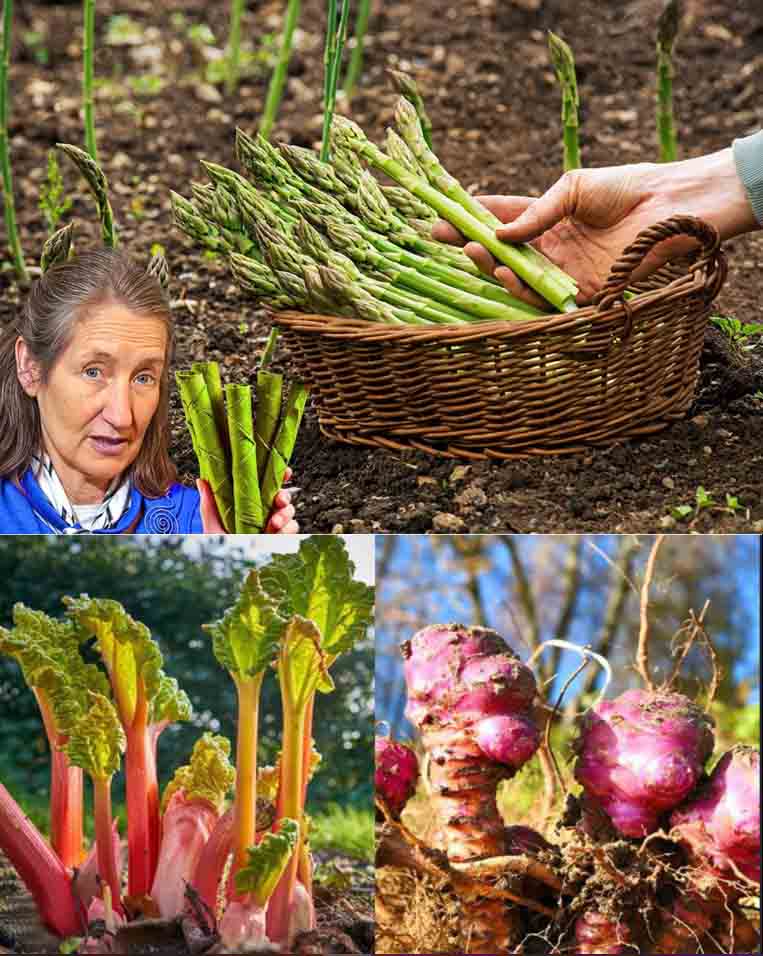Imagine planting a vegetable once and harvesting it year after year without the need for replanting. Unlike annual vegetables that require constant re-sowing, perennial vegetables offer a sustainable, low-maintenance, and productive alternative. By incorporating these long-lasting crops into your garden, you can reduce effort, save money, and enjoy continuous harvests.
Here are 12 perennial vegetables that will keep providing you with fresh, nutritious produce for years to come.

1. Asparagus (Asparagus officinalis)



Growing Tip: Asparagus thrives in well-drained soil and full sun. Avoid harvesting in the first year to allow the plants to develop a strong root system.
2. Rhubarb (Rheum rhabarbarum)



Growing Tip: Only harvest the stalks, as rhubarb leaves are toxic to humans.
3. Artichoke (Cynara cardunculus)



Growing Tip: Artichokes thrive in mild climates and require well-drained soil and full sun.
4. Horseradish (Armoracia rusticana)



Growing Tip: Plant in a container or a controlled space, as horseradish spreads aggressively.
5. Jerusalem Artichoke (Helianthus tuberosus)



Growing Tip: Like horseradish, Jerusalem artichokes spread easily, so plant them in a designated area.
6. Lovage (Levisticum officinale)



Growing Tip: Give lovage plenty of space—it can grow up to 6 feet tall!
7. Walking Onion (Allium proliferum)



Growing Tip: Plant in a sunny location, and enjoy continuous green onions without replanting.
8. Sorrel (Rumex acetosa)



Growing Tip: Regularly trim older leaves to encourage new growth.
9. Chinese Artichoke (Stachys affinis)



Growing Tip: Grow in loose, sandy soil to make harvesting easier.
10. Good King Henry (Chenopodium bonus-henricus)



Growing Tip: Give it rich, well-drained soil, and it will thrive with minimal maintenance.
11. Sea Kale (Crambe maritima)



Growing Tip: Mulch heavily in cold climates to protect the roots over winter.
12. Perennial Kale (Brassica oleracea)



Growing Tip: Trim the plant regularly to promote continuous leaf production.
Why Grow Perennial Vegetables?




Final Thoughts: Plant Once, Harvest Forever
By incorporating perennial vegetables into your garden, you create a sustainable, productive, and low-maintenance food source that keeps on giving year after year. Whether you’re growing asparagus, rhubarb, or perennial kale, these long-lived crops will provide continuous harvests with minimal effort.

Would you consider adding perennial vegetables to your garden? Let us know in the comments!





